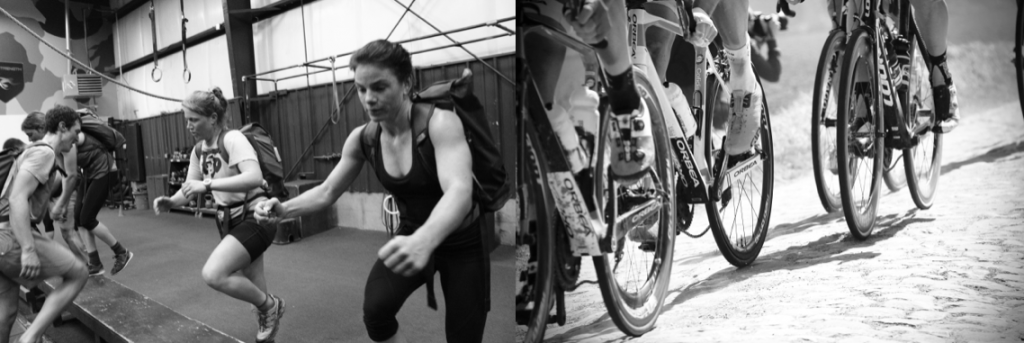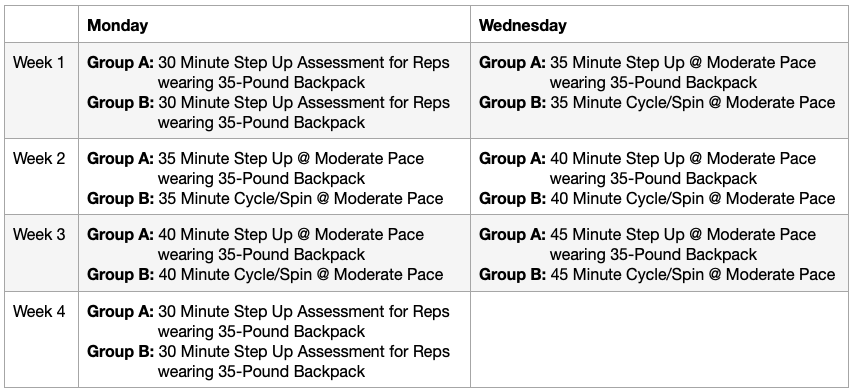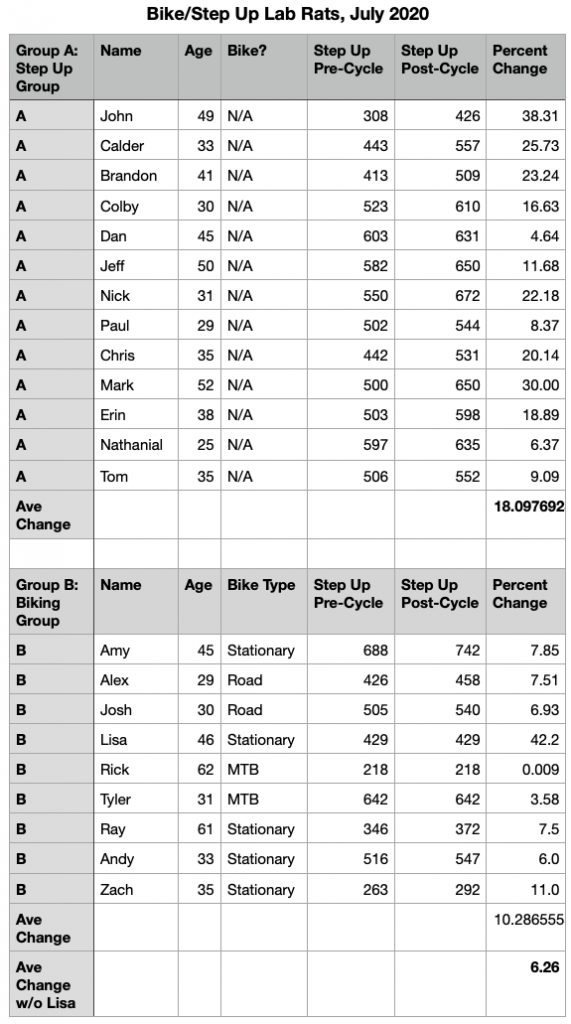By Rob Shaul
BLUF
This 3.5-week Mini-Study investigated the transfer of biking/cycling/spinning to uphill movement under load. Anecdotally we have heard that biking/spinning improved uphill movement, and designed this mini-study to test this theory.
Remote, volunteer athletes were divided into two groups, A and B. At the beginning of the cycle, both groups completed a 30 minute step up assessment for reps wearing a 35 pound backpack.
Over the next three weeks, Group A completed a time-based step up effort wearing a 35-pound backpack, twice per week. Group B completed a time-based cycling/biking or spinning effort, twice per week. At the end of the three week period, both groups re-assessed the 30-minute step up effort.
Group A’s average improvement was 18.1%. Group B’s average assessment was 6.26%.
The results question the effectiveness of biking/spinning to improve uphill movement under load, and reinforce the power of sport-specific training to improve sport-specific fitness.
BACKGROUND & STUDY DESIGN
Anecdotally, we’ve read that biking/spinning can improve uphill movement under load, but we’ve never tested this.
In our experience, the best way to improve a specific fitness attribute is to simply train that attribute. So, the best way to improve uphill hiking under load is to hike uphill with a loaded pack.
However, we are interested to see if other modes can transfer. In some cases, weather, geography, injury and/or equipment restrictions can limit an athlete’s ability to hike uphill or do step ups in the gym. Having an alternative training mode that has good transfer to loaded uphill hiking gives us and our athletes another tool in the toolbox to work with.
We advertised for remote Lab Rats via our weekly newsletter, and ultimately 28 volunteered and were randomly broking into two groups, A and B. Both groups completed an initial max rep 30 Minute Max Rep Step Up effort wearing a 35# Backpack and using a 16-20″ bench or box.
Over the next three weeks, Group A (control group) completed a time based progression of 35-pound step ups two times per week at a moderate pace.
Group B (study group) completed a time-based progression of spinning or flat cycling two times per week at a moderate pace.
The time-based progression for each group was the same. For example, on the day Group A completed 35 minutes of step ups at a moderate pace, Group B completed 35 minutes of cycling/spinning at a moderate pace.
On the Monday of week 4, each Group re-assessed the 30-minute Max Rep Step Up effort we compared the results.
Lab Rats were able to complete these progressions on top or in addition to their regular current training, we just asked that for the duration of the study, they not complete any additional steps ups or cycling work (depending on your assigned group).
See the cycle details below:
RESULTS & DISCUSSION
Below are the mini-study results:
We had a greater attrition of Lab Rats from Group B than Group A. We lost just one Lab Rat to attrition from Group A, and lost six Lab Rats from Group B.
As well, in Group B we had one outlier in results, – Lisa – who experienced a 42.2% improvement in step ups at the second assessment. We assume much of this improvement is due to familiarity with step ups and knowing what to expect, so I decided to remove her data and average the results of the remaining athletes in Group B.
As well, I assume much of the assessment improvement which the Group B Lab Rats did see was also a result of familiarity with the assessment, and not a gain in step up assessment from cycling/spinning.
The results speak for themselves – by far, the best way to improve step up performance is to do step ups, and the transfer of cycling/spinning to step up performance is negligible.
As with all studies, there are some concerns with this study design. First, we used loaded step ups as a proxy for loaded uphill movement. Through over a decade of programming for mountain athletes we’ve proven that step ups have good transfer for loaded uphill movements – but they are not exactly the same, and if the assessment was an actual uphill movement assessment, the results may have been different.
NEXT STEPS
While this may seem like an obvious study result, the search for mode transfer is justified. In some cases, weather, geography, injury and/or equipment restrictions can limit an athlete’s ability to hike uphill or do step ups in the gym. Having an alternative training mode that has good transfer to loaded uphill hiking gives us and our athletes another tool in the toolbox to work with.
The same can be said of running, rucking, and other endurance modes.
Questions? Email coach@mtntactical.com
Comments? Please enter your comment below.
You Might Also Like Geek Cycle: Leg Blasters Match Front Squat in Building Lower Body Strength



